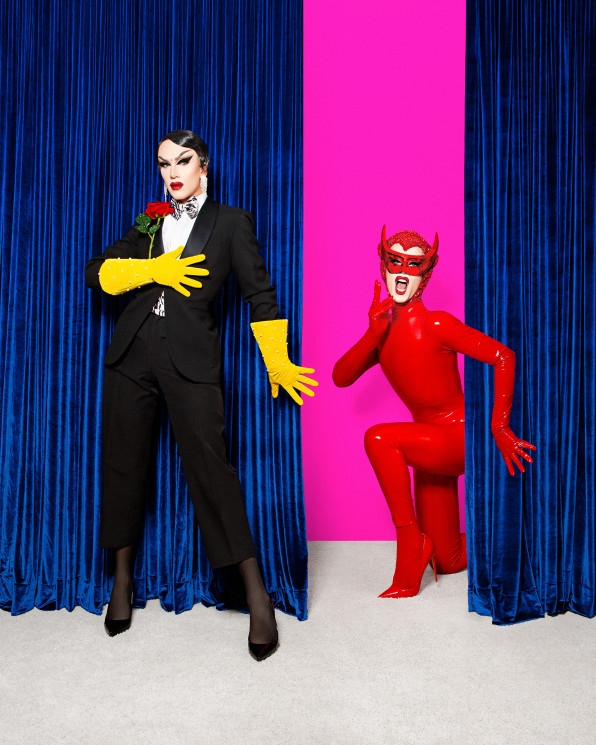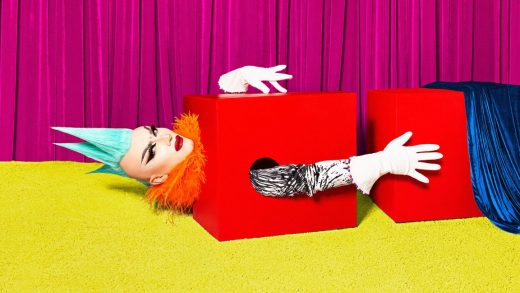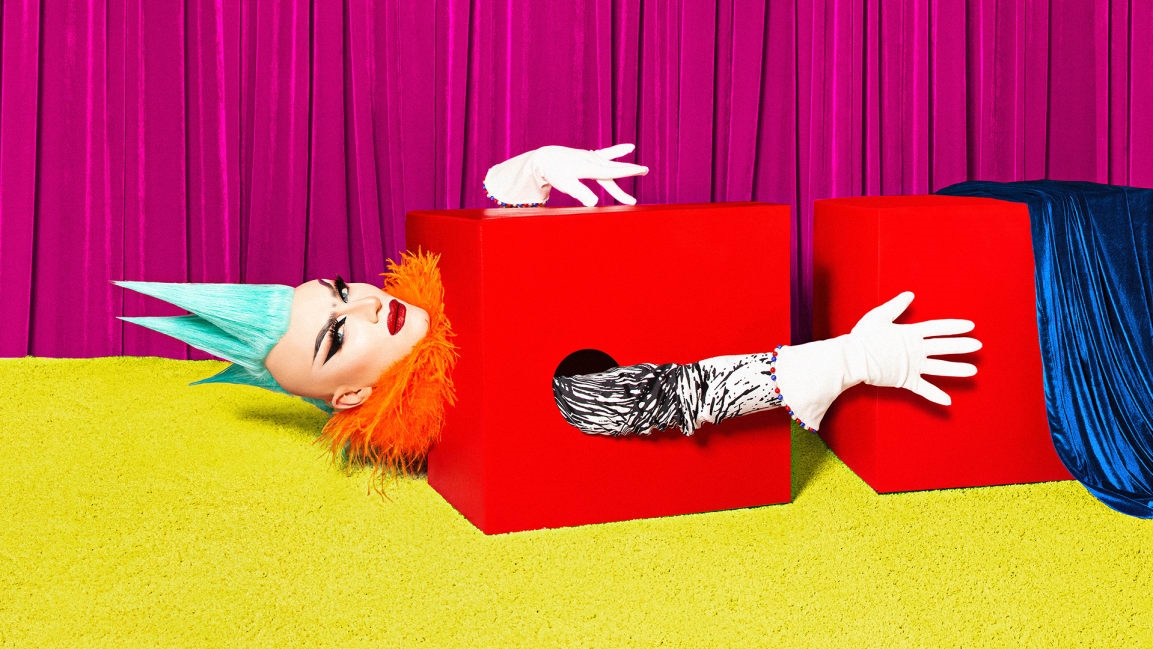How the fantasy of drag helps Sasha Velour deal with reality
Listen to the latest episode of Fast Company‘s podcast Creative Conversation featuring drag queen Sasha Velour on Apple Podcasts, Spotify, RadioPublic, GooglePlay, or Stitcher.
For Sasha Velour, all roads led to drag.
Being a Fulbright scholar, Vassar grad, graphic artist, and illustrator were all primers for the trailblazing work she does now as a performer, public speaker, and advocate for the LGBTQIA+ community. But even after winning season 9 of RuPaul’s Drag Race, landing brand ambassador deals, and selling out shows, Velour is still riddled with creative self-doubt.
“I’ve been trying to really lean in to the fantasy of drag. It does carry with it some level of delusion and that is like an artistic indulgence–that’s very helpful to survive the world,” Velour says in the latest episode of Fast Company‘s podcast Creative Conversation. “And I feel like I can replicate that process in my own mental health a little and be like, ‘No, you are fabulous.’ Putting on a steel-boned corset and 10-inch platforms, it’s hard not to look in the mirror and hold yourself a little higher and feel that you really are royalty.”
Even before being crowned America’s next drag superstar, Velour has been using her monthly Brooklyn drag revue, Nightgowns, as a way to showcase the breadth of the art form expressed by performers across racial, gender, and sexual spectrums. Since its premiere in 2015, Nightgowns has grown from a handful of audience members to packing New York City’s concert venue Terminal 5 (where Janet Jackson was reported in attendance) as well as expanding to Los Angeles and London. As popular as Nightgowns has been, Velour had never produced a solo show until January when she debuted Smoke & Mirrors in Australia. She’s now bringing her one-woman show to New York City later this month.
In this episode of Creative Conversation, Velour explains why she finally took the leap into a solo show, the creative process behind her legendary lip-syncs, and how she’s elevating drag by empowering its performers.
Redefining classic songs through lip-sync
“We could take ‘The Man that Got Away’ as a good example. It’s a classic Judy Garland song. I started just by studying her performance in the movie A Star is Born. I felt like she actually was signaling different levels of openness with where she put her head or where she put her arms. So I started channeling some of those movements, but then I wanted to tell a different story—not about necessarily a broken heart in a romance. So many songs are about heterosexual romance. And I like, in my performances, to make it about anything but that. When I heard the song, this story came to my mind of someone who feels like their life is falling apart because this authority figure in their life has gone. And then they realize in the process of tearing their hair out over it that they actually have the thing that they were looking for within themselves. That’s more of the kind of story I want to tell on stage than just ‘You left me, and now my life is over.’ All I have to work with is the text and the music, which don’t change. But I can make changes through my costume, through my face, through my movements on the stage. I felt like transforming into this men’s shirt and tie and hat that’s been hiding within her costume this whole time was the clearest way I had of telling that story.”
Finding truth through Smoke & Mirrors
“I don’t have the words to talk about the most personal things in my life, and lip-synching performances are used for that. But a lip-sync performance is only, maximum, maybe seven or eight minutes if you really stretch it out. And by nature they have a very simple narrative structure where there’s a beginning, and then a conflict or some growth, and then a dramatic resolution or reveal. And I felt like that was a little too simple to talk about the ideas that I wanted to talk about. I wanted to create a show about the ups and downs of the last couple of years. And in order to do that, I felt like I needed to have many different moments back-to-back that chartered the exquisite reveals and discoveries, and also the sad moments that don’t lead to resolution. And then ultimately the whole thing is just a cycle–just like all human life, really. There are highs and there are lows. They’re transcendent reveals and there are moments of stillness.”

Velour’s most important creative lesson
“I reflect on the things that fill in my life. And I obviously feel so passionate about drag that I regularly stay up all night, tear my hair out, so to speak, basically invest all of my money and time into doing my best at this thing that I love. I feel like everyone should have something in their lives that makes them behave in such an extra manner–to go to such extra lengths that they really are beyond normal life when it comes to this thing. And I feel like that has sustained me through hardships and uncertainty, my passion for the thing that I love. Everyone needs to figure out what that is for themselves.”
Fast Company , Read Full Story
(23)



